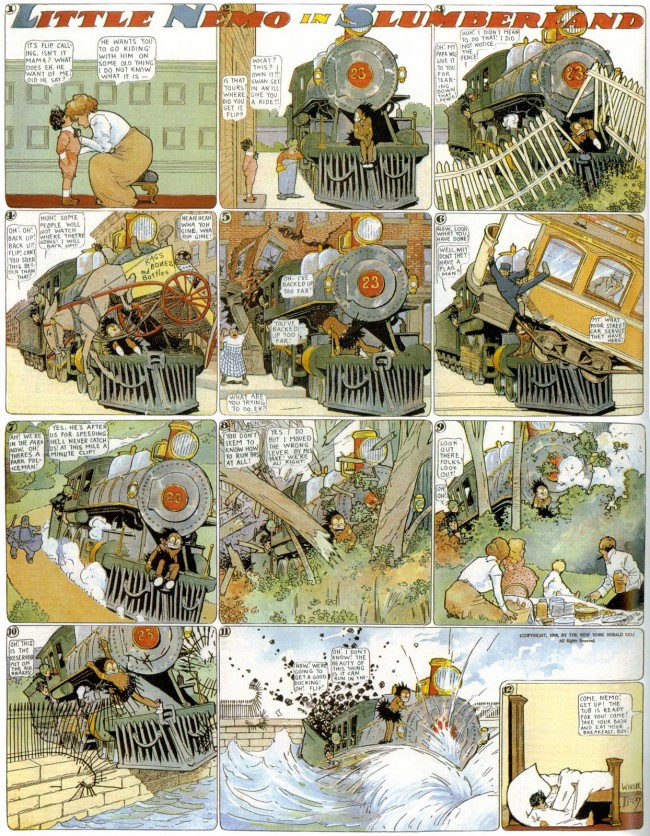

Rather than being about Little Nemo, who happens to be in Slumberland, it is a strip about Slumberland, which happens to get visits from a Little Nemo. The fact that the episodes follow one after another in a continuous narrative gives the feel that this is a real place, and not a dream. Nemo’s little face is nothing more than a few dots on his tiny pajama-draped body. The panels are often large, giving the reader a sense of the dream world the characters regularly dwarf in comparison.

They include cityscapes, palaces, pirate ships, frozen gardens, and ever more beautiful scenery. The pages are layered with color, exquisitely detailed, and drawn with architectural precision. What makes the strip so magical is the beautiful artistic rendering by McCay. However, the adventurous narrative continuously picked up again in the next strip, or dream. Sadly, these dreams always ended with him waking up in his bed. Each strip of this comic series added a new episode to Nemo’s adventures with the princess of Slumberland, a green- faced character named Flip, and a number of other exciting caricatures. Of course, one could gain that much from the title itself. The strip starred a little boy named Nemo and his fantastical dreams through a dream world called Slumberland. (McCay would return to the Herald in 1924). Little Nemo was a full page strip, produced weekly, first in the New York Herald in 1905 and later in the New York American in 1911. If you need a break from reading Superhero comics and Internet memes, check out some classic comic strips! Little Nemo in Slumberland is a great place to start, created by the master comic artist Winsor McCay at the beginning of the 20 th century.


 0 kommentar(er)
0 kommentar(er)
